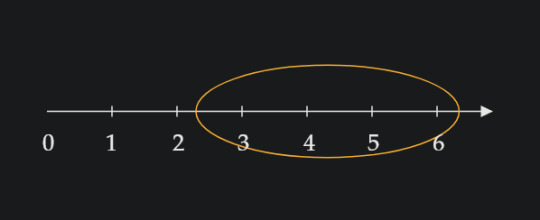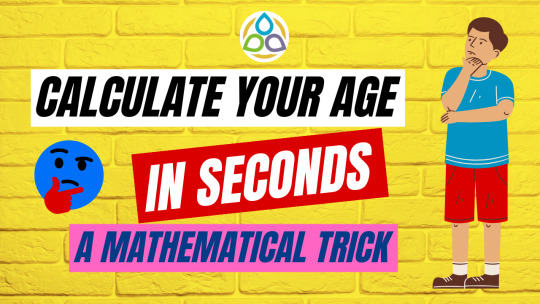#algebra tricks
Explore tagged Tumblr posts
Text
Mastering Special Series in Geometric Progression (7+77+777+... & 0.3+0.33+...) - Complete Guide
Geometric Progressions (GP) become fascinating when we encounter special series like: 7 + 77 + 777 + 7777 + … to n terms 0.3 + 0.33 + 0.333 + 0.3333 + … to n terms (and infinite terms) In this comprehensive guide (based on 9nid’s YouTube Video – Geometric Progression Part 3), we’ll break down:✓ The step-by-step method to solve these series✓ How to find sums for finite AND infinite terms✓…
#2^x + 2^2x + 2^3x = 39#9nid math#algebra substitution method#algebra tricks#competitive exam math#exponential equation solving#exponential equations#JEE Math Tricks#math brain teaser#math challenge#math concepts#math explained#math for JEE#math for NEET#math genius#math help#math made easy#math olympiad problems#math puzzles#math shortcuts#math shorts#math solutions#math tutorials#mathematics#problem solving#short math tricks#solve 2^x + 4^x + 8^x = 39#viral math problem
0 notes
Text
Mastering Special Series in Geometric Progression (7+77+777+... & 0.3+0.33+...) - Complete Guide
Geometric Progressions (GP) become fascinating when we encounter special series like: 7 + 77 + 777 + 7777 + … to n terms 0.3 + 0.33 + 0.333 + 0.3333 + … to n terms (and infinite terms) In this comprehensive guide (based on 9nid’s YouTube Video – Geometric Progression Part 3), we’ll break down:✓ The step-by-step method to solve these series✓ How to find sums for finite AND infinite terms✓…
#2^x + 2^2x + 2^3x = 39#9nid math#algebra substitution method#algebra tricks#competitive exam math#exponential equation solving#exponential equations#JEE Math Tricks#math brain teaser#math challenge#math concepts#math explained#math for JEE#math for NEET#math genius#math help#math made easy#math olympiad problems#math puzzles#math shortcuts#math shorts#math solutions#math tutorials#mathematics#problem solving#short math tricks#solve 2^x + 4^x + 8^x = 39#viral math problem
0 notes
Text
*Simple way to learn Engineering Mathematics - Linear Algebra Determinants. Please press 🔔 to *SUBSCRIBE the channel, LIKE ✅ & SHARE ⏩ to the students who are interested in online learning of maths. Once SUBSCRIBE, he or she will get the automatic notification of new VIDEO upload 📚 https://youtube.com/playlist?list=PLXty9dIfmxj_kWvR8s3vHUkOLp-_nW4eP&si=obCJDOLLr1VWu8DR
#maths_clinic_okc#mathscliniccounseling#maths simple tricks#engineering mathematics#youtube#determinants#linear algebra
12 notes
·
View notes
Note
Is there a way to use group cohomology to classify all extensions and not just central ones?
Hey marigold-22!
Absolutely there is! Here's a super real math trick just for you!
Instead of looking at the group actions of a group G in an associated G-module M, look at the group actions of all of the groups! That along with a twisted coefficients allow you to take into account ALL extensions.
#math#mathblr#super real math tricks#math tricks#mathematics#maths#group cohomology#algebraic topology
7 notes
·
View notes
Text










I think I am not able to do anything anymore for the next 9 months…
#damiano david#damiano maneskin#new video#damiano#loml#pregnant#are you into tricks or treats? cause I can do both sir#I’m pretty good at algebra…I can replace your X and you wouldn’t need to figure out Y.#I had a vivid dream about you last night …and I woke up sticky
10 notes
·
View notes
Text
reading a bunch of articles on phonics and whole word reading and listening to old vi hart videos in the background and realizing that if there's an equivalent to phonics for math, i don't think we get taught it
#maybe the reason so many people hate math and find it difficult is because it's taught badly........ who'd-a thunk it#listening to vi hart talk about this math guy's triangle and how an odd number plus an even number is an odd number#but an odd number plus an odd number is an even number#and being like man why didn't i learn stuff like that instead of having to do Fancy Counting#now i gotta do algebra in order to remember how division works#obligatory disclaimer to treat this with a grain of salt and do your own research while i do mine cause i am not a Math Expert#and i have a very bad memory so i could very well have learned that particular trick and just forgot#i'm just spitballing here
5 notes
·
View notes
Text
taught my boy l'hopital's rule now he's unstoppable
#text#he was like i keep messing up the algebra for these limits :( i was like well do i have a trick for you
5 notes
·
View notes
Text
lovelies. i'm even more mentally ill. teaching in this gdforsaken educational system deadens the soul and fucks over the generations. i am reaching a career level depth of despair. the school system troubles itself and its members with things so stupid and makes these things necessary and necessarily stupid that no one can find the time to be conscious of their friend, brother, neighbour. everyone is a mouse to everyone else. bahala na talaga si tanginang deped at si batman i can teach the most hopeless case in the history of physics two of my students in my other class have dyslexia dyspraxia and intellectual disabilities and theyre doing fucking wonderful because they care! care about any shallow thing! i cannot teach students who go through the world unnoticing and unnoticed.
#questioning myself for 10 weeks if it was me and my teaching#no it wasnt#one of my students blamed me for not putting an equation in the ppt (it was in the ppt)#they dont know basic algebra- they are perpetually desperate and perpetually unthinking#uncritical unfeeling unloving uncaring#i am moving against an immovable object and i am only a real body in this gddamn ideal utopia people have tricked themselves into believing
1 note
·
View note
Text
First post!! I wanted to show you how deep a rabbit hole you can dig with a very simple concept like, "What does 'four' mean?"
I have a number line.

So, I'd like you to imagine that you've sat down across from me on your first day in class, and I put some kind of math worksheet with this number line on it that gives you a very simple-sounding task: "Circle four."
If you are like nearly every one of the older students I've had, you'll circle the number 4 on the line. And I'd say something like, "That is a perfectly reasonable response to this request. There is nothing wrong with what you've done. But aren't you suspicious about how simple this question sounds? Did you see that there was a twist coming?"
On a number line, the place where we've written 4 is not actually the value 4. It is more like the position 4; we would call this the ordinal number (a number used to track the positional order of things; another example of an ordinal number is the word "fourth," which tells you that there are three other things before that one).
So, if you just circled the number 4, you definitely circled the position, but the thing you circled isn't worth 4. If you were going to circle the thing that has the value (or cardinality, since we're counting individual objects) of 4, it would look something more like this:

This is because in order to have the value of 4, you need everything that came before it! Imagine counting out candy while your kid sister steals and eats the candies you counted already. When you get to your final number, that number is not how many candies you have, but rather how many you counted cuz your sister's got 'em all! For the value of your candies to stay the same, you need all of them to be there!
"Four" could also look, less straightforwardly, like this:

The distance from the start of the circle to the end is four; and since we're circling the line, the length of the line that is circled is four. If we imagine the circle starts (from the left) at the position of 2.3, it would have to end at the position (from the right) 6.3. If we find the difference of the numbers at these positions, we would be doing the equation 6.3 - 2.3 = 4.
A quick summary:
The position of a number is shown with an ordinal number.
The actual physical quantity of the individual items is shown with a cardinal number, which we more typically call the value.
We can find a value inside the ordinals by finding the distance between any two ordinals, via subtraction.
Okay... But notice we've used two words here that seem to imply the same thing: difference and distance. Let's clear this up real quick:
Difference is the result of subtraction. Generally, if we want to find the difference between two things, we subtract the first thing from the second thing:
second - first = difference
But that's not a rule, so much as a norm. In reality, if you wanted to find the difference of two numbers, the person asking had best be very clear which way they want you to do it, because if you reverse this you will get the negative of the result above!
For example, if you were asked to find the difference between 6 and 15, you would do 15 - 6 = 9. But if it's not clear and you instead did 6 - 15, you get -9.
If, however, someone wanted to know how far apart these two numbers are, they would not be asking the difference but rather the distance between these numbers. The result would therefore be the absolute value of either one of these subtractions:
|15 - 6| = |9| = 9, |6 - 15| = |-9| = 9 Same result!
This is in actuality the real use of absolute values. Absolute value is typically shown as "the distance from zero," which is kind of true? But it's really for finding distances of any kind -- in fact, it's later used to mean exactly that when you get into complex algebra (that is, algebra with imaginary numbers) and linear algebra (matrices and vectors).
But that's for later.
#math#mathematics#math help#math tricks#math teaching#arithmetic#algebra#cardinality#ordinals#subtraction#absolute value#numbers#math education
2 notes
·
View notes
Text
"ur too old for trick or treating" im never too old to get 8 pounds of free candy u think i'm paying for that shit myself
0 notes
Text
📘 JEE Series Part-18 | Arithmetic Progression (AP) Part-02 – Deep Dive into Core Concepts
Welcome to Part-18 of the 9nid JEE Series, your ultimate Hinglish learning zone for mastering JEE Maths with clarity and confidence. In this session, we go deeper into Arithmetic Progression (AP) — one of the most scoring topics in Sequence and Series for JEE Main and Advanced. 🔍 What’s Covered in This Video? In this video, we move beyond the basics of AP and explore more conceptual and…
#9nid jee lectures#ap explained in hindi#ap jee mains#ap part 2 jee#ap questions jee#ap short tricks#arithmetic progression#arithmetic progression jee advanced#JEE 2025 Maths#jee algebra#JEE in Hinglish#jee main preparation#jee maths daily practice#jee series 9nid#nth term of ap#sequence and series class 11#sum of ap
0 notes
Text
📘 JEE Series Part-18 | Arithmetic Progression (AP) Part-02 – Deep Dive into Core Concepts
Welcome to Part-18 of the 9nid JEE Series, your ultimate Hinglish learning zone for mastering JEE Maths with clarity and confidence. In this session, we go deeper into Arithmetic Progression (AP) — one of the most scoring topics in Sequence and Series for JEE Main and Advanced. 🔍 What’s Covered in This Video? In this video, we move beyond the basics of AP and explore more conceptual and…
#9nid jee lectures#ap explained in hindi#ap jee mains#ap part 2 jee#ap questions jee#ap short tricks#arithmetic progression#arithmetic progression jee advanced#JEE 2025 Maths#jee algebra#JEE in Hinglish#jee main preparation#jee maths daily practice#jee series 9nid#nth term of ap#sequence and series class 11#sum of ap
0 notes
Text
Simple way to learn Engineering Mathematics - Linear Algebra_Cramers Rule to 22 system of linear equations. Please press 🔔 to *SUBSCRIBE the channel, LIKE ✅ & SHARE ⏩ to the students who are interested in online learning of maths. Once *SUBSCRIBE*, he or she will get the automatic notification of *new VIDEO upload* 📚
#maths_clinic_okc#mathscliniccounseling#maths simple tricks#engineering mathematics#highschool mathematics#determinants#linear algebra
3 notes
·
View notes
Text
Algebra hard for you? Don’t worry! Here’s a super real math trick!
All numbers are imaginary in algebra! So to get the right answer, you just have to imagine a number! Simple as that!
9 notes
·
View notes
Text
actually making a concerted effort to learn written japanese (since I've learned a small amount of spoken already) and. oh boy did not realise how hard it is for my brain to learn new symbols
#not beating the dyslexia allegations here tbh#but like tbh i struggle to read even just fonts i don't normally read often#if an app changes its font it genuinely gets harder for me to read and use for a bit#but I've always thought of myself as a good reader and speller?#but now i have to wonder- was it just because i subconsciously implemented 'tricks' to help me deal with it easier so i didn't notice?#because learning a new language means absolutely none of those 'tricks' work#I've always felt like I've known the Shape of a word better than the actual content of letters making them up#most fonts have varying widths for different words right. except those kinds of typewriter fonts that make all letters evenly spaced#and i actually struggle to read typewriter fonts as quickly as i read like. basic sans serif arial-adjascent fonts#i actually prefer to do edit work in courier BECAUSE it forces me to read my own work slower#holy shit i googled 'courier font' and now the whole page is in courier thats kinda cool#also everyone says i spell really well in texts and things#what you dont know is that 90% of my hesitation with sending a message is just doing about 50 rereads to check for errors#(i Have to check it that many times cause otherwise i Will miss something and i Hate making typos)#(bc everyone makes fun of me for making typos and i do not like jokes being made out of misinterpreting me on purpose)#is there a dyslexia quiz that doesn't solely ask about your spelling and reading levels#like there's gotta be other symptoms than just being a slow reader what if you just brute forced reading fast somehow#i also didn't realise i was dyscalculic because i had to use so many similar Tricks to get me through math#and then algebra hit and i haven't passed a math class since......#like maybe i didn't notice i was dyslexic until i hit a barrier where my tricks just stopped working for me#like reading letters that aren't shaped the way I'm used to or learning a new language with different rules#i still have a vendetta against the Fancy lowercase a that just looks like an upside down e trying to read it makes me angry
1 note
·
View note
Text
Calculate Your Age in Seconds - A Mathematical Trick
Algebra serves as a remarkable tool for determining the unknown age of an individual through a series of mathematical operations. This intriguing process unfolds like magic, enabling anyone to deduce their age without disclosing the information to others. By engaging in specific algebraic calculations, participants in this game can arrive at a final result. With this conclusive value in hand, I,…

View On WordPress
#addition#age calculation#age calculation tricks#age tricks#algebraic way to calculate the age#calculate age mathematically#division#Math1089#Mathematics for All#multiplication#subtraction
0 notes